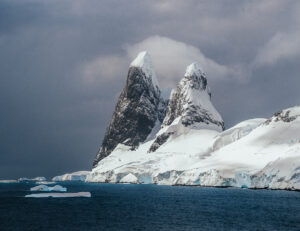University of Buenos Aires plans wastewater plant in Antarctica

The system will be complemented with a biodigester for organic waste treatment, as well as solar panels and wind turbines to ensure the plant's energy is 100% renewable.
The project has been made possible due to an agreement signed with the Joint Antarctic Command and the IFES Group (Innovations for a Sustainable Energy Future), a company that emerged from the faculty's project incubator. The National Water Institute (INA) is also participating in the initiative.
"The biggest challenge is that this plant must have a series of very precise characteristics, such as its robustness and the temperature at which it must be, due to the extreme characteristics of the place where it will operate. If it breaks down, for example, it may take several months before it is operational again", said Roberto Serafini, professor of Inorganic and Analytical Chemistry at FAUBA, and one of the project leaders.
The laboratory at the Petrel base could play a decisive role. Serafini explained: "The idea is to remotely monitor temperature, pH, conductivity and other variables that require specific analysis. This remote monitoring would also make it possible to share data with databases in other countries and thus enrich the system".
The project will be presented in September 2023 at the Antarctic Treaty Consultative Meeting, where countries share information on the projects they plan to implement on the continent.
If the initiative is approved, budget allocations will be allocated and it will move to the construction phase.
"The effluents from the plant, which are usually dumped into surface waters, in this case will be transferred to a kind of lagoon that will be set up and then channeled into the sea. Given that it is a very fragile ecosystem, the project guarantees that the discharge water will be compatible with the discharge parameters, which are standardised and indicate, for example, that such water cannot have more than a certain amount of bacteria, nitrogen, etc.," added Serafini.
The water treatment plant will be directly linked to the new main house to be built at the Petrel base, which, in summer, will have a maximum capacity of 150 people.
The project, as with any project a country plans to deliver in Antarctica, must be agreed with the other countries that have bases on the continent before it progresses.
The new plant would have a module of solar panels, wind turbines and solar thermal tanks for an anaerobic biodigestion process, which is carried out with microorganisms that require the temperature to be relatively high for Antarctica - between 20 and 25 degrees.
The last step in this process is the generation of biogas from the different wastes, both wastewater and other organic remains such as kitchen waste, among others.
"In this biological process, sludge is generated that must be removed at certain times, otherwise it accumulates and reduces the efficiency of the mechanism. This sludge can be mixed with solid waste to achieve anaerobic biodigestion. From this process biogas can be obtained, which is combusted and can have different uses within the same base," said Serafini.
"The material left over from this process is dehydrated to reduce its volume, then it is loaded in containers and sent to Ushuaia for final disposal," he concluded.


























